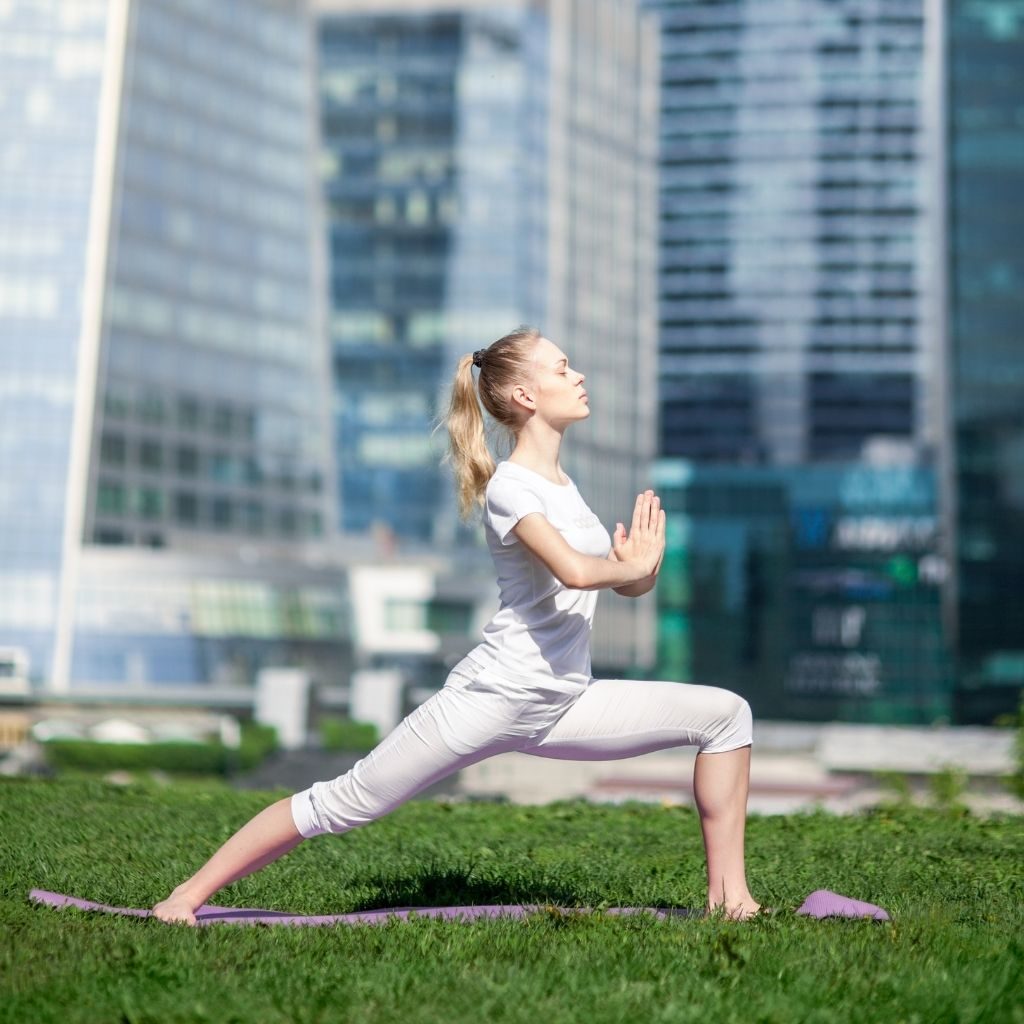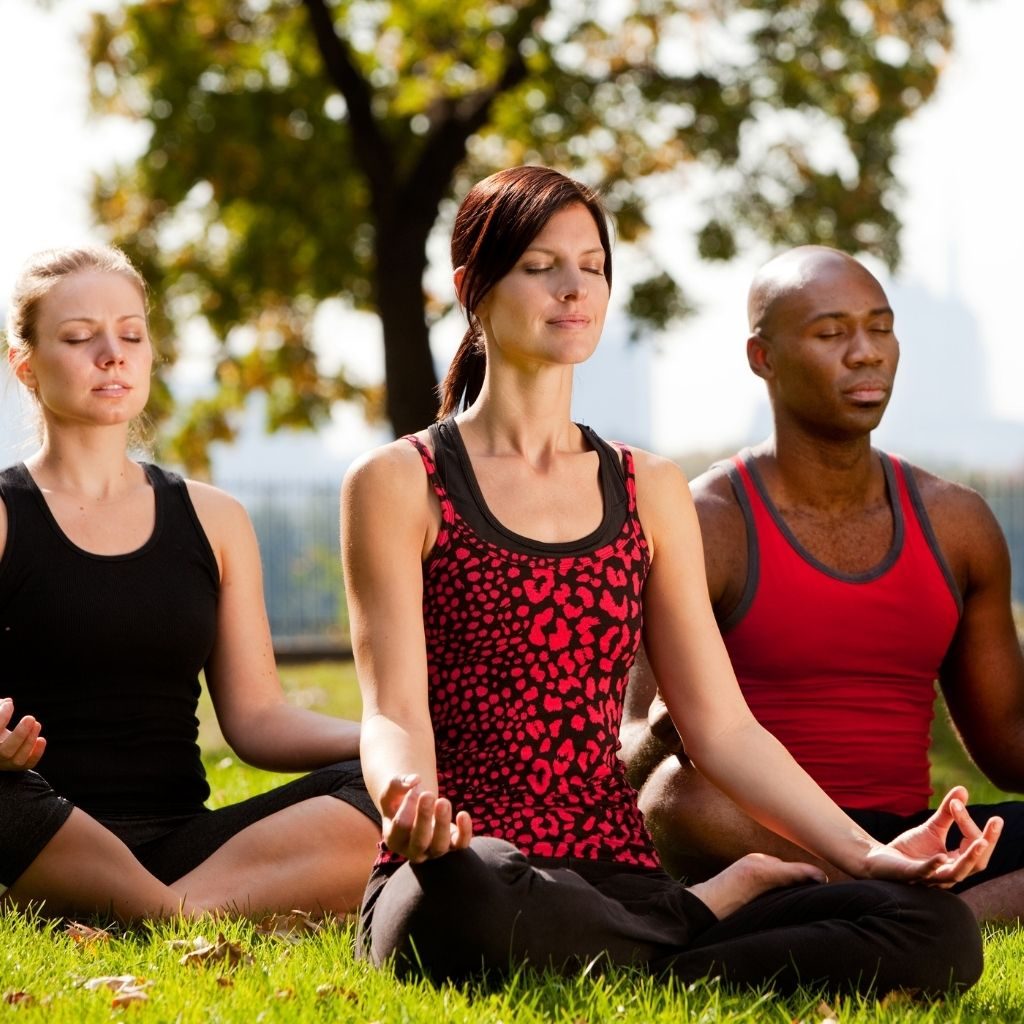Why Yoga Is Important in Modern Life (+ Its Incredible Benefits)
Yoga dates back to pre-Vedic times, possibly around 3000 BC. That’s a very long time ago. It’s only natural to question why yoga is essential in modern life.
Modern life is fraught with contradictions and complexities, perhaps why yoga is more relevant and crucial than ever before.

Yoga is important in daily life because it provides a holistic practice that takes care of body, mind, and soul. The tools and techniques available in yoga help us take care of our physical health, ease us from stress, improve mental well-being, guide us to ethical living, and enable us to make better lifestyle choices. Yoga is, therefore, a way of life.
In what follows, we talk about why yoga is essential in our daily life, its relevance for the times we live in, the purpose of our practice, and how we can benefit from creating a discipline around it.
Why is yoga essential in our daily life?
Yoga is a holistic practice, more a way of life than an exercise regime.
There is no aspect of our being that yoga does not positively impact – physical, mental, ethical, emotional, and spiritual.
Here are the ways in which yoga is vital in our daily life:
1. Helps us stay in the present
We are more connected to the outside world than ever before.
The distractions of modern life, whether in the form of social media, audio-visual content, instant messaging, or online shopping, keep our focus on everything that is external to us.
Yoga becomes our anchor and makes us more concentrated and less scattered.
The different yoga practices – whether yoga as exercise, as breathwork, or as meditation, help us stay in the here and now and connect with our inner selves.
2. Helps build physical strength and flexibility
Regular practice of yoga does many things for our physical body.
Yoga helps tone the muscles, increase flexibility, improve strength, reduce blood pressure, and lower heart rate.
Depending on the kind of yoga one practices, it can range from being restorative, aerobic, balancing, grounding, or even all of these simultaneously.
3. Improves posture
Modern life has become synonymous with screens, a place where we spend a lot of our time.
This has a significant impact on our posture, often resulting in slouching and humped backs.
Yoga helps in improving posture by enhancing awareness of the body and thereby breaking the habit of slouching.
It builds upper body strength, strengthens the core and back muscles, and improves body alignment and flexibility.
Wanna know more? 👉 Yoga Poses to Improve Posture
4. Helps in keeping the joints healthy
Regular practice of yoga strengthens the muscles around the joints.
The various asanas in yoga bring movement to the joints through their whole range of motion, thus creating more mobilization.
This helps in lubricating the joints, which enables smooth movement of the bones.
This also helps in increasing oxygen supply to the cartilages, keeping them nourished and happy.
Yoga, therefore, is beneficial not just to counter the effects of aging on joints but also alleviating symptoms of arthritis and joint pain.
5. Helps improve mental health
One of the most significant tolls that the stresses of daily life take are on our mental health.
We are more depressed, anxious, and lonely than ever before.
Studies show that yoga helps with anxiety and depression.
It also helps with managing the symptoms of depression, such as difficulty concentrating and loss of energy.
6. Reduces stress
If there is one thing that almost all of us have a little more than we would like, it is stress.
The demands of everyday life can feel stressful and draining.
Yoga helps us beat stress by promoting relaxation, slowing us down, and letting us be.
Pranayama or breathing exercises in yoga are beneficial for relaxing both the mind and the body.
Yoga also improves mood and boosts our sense of well-being.
7. Helps us sleep better
More than half of those who practice yoga report improved sleep, both in quantity and quality.
Sleep, as we know, is often our nemesis.
Practicing yoga helps with managing the symptoms of insomnia.
If you practice yoga, the chances are that you will sleep for longer, fall asleep quicker, and, if you happen to wake up in the middle of the night, find sleep again.
8. Helps us build a better lifestyle
The yogic lifestyle brings together various aspects of your being to create a balanced, healthy, and integrated you.
Food is a big part of health.
Yoga encourages us to be more mindful of what we eat and promotes a healthy diet.
It makes us aware of what we are putting into our bodies, and over time, we can build routines around food, sleep, rest, and establish habits that serve our best interest.
This brings us to the question of the relevance of yoga in the 21st century.
You may also like 👉 How to start a yoga lifestyle

Relevance of yoga in the 21st century
The challenges of the 21st century have a lot to do with how we feel, what we do with our time, and where we want to be when it comes to realizing the self.
Yoga, which literally means joining, integrating, or combining, combines the various aspects of our life – the physical, mental, emotional, ethical, social, and spiritual.
Yoga certainly helps with physical health and wellbeing and improving quality of life by reducing stress, improving focus and concentration, and strengthening mental health.
However, yoga is not limited to doing just that.
Its more profound impact is on how it helps us transform habits, attitudes, and behaviors.
The way it builds mental strength, enables us to establish routines, and helps us in our decision-making by making us more mindful, less reactive, and more in control of our emotions.
Yoga also helps us integrate with the outside world by bringing out from inside us a more empathetic, patient, kind, and self-confident version of ourselves.
What is the purpose of a yoga practice?
As described in the Yoga Sutras, the ultimate purpose of yoga practice is the cessation of fluctuations or modifications of the mind. It is only when the mind is still and free from any kind of disturbances that enlightenment can be achieved. All the practices and techniques that yoga lays down are meant to eventually lead us to that very purpose.
Patanjali, the sage who compiled the Yoga Sutras – one of the most essential texts on yoga theory and practice – classifies classical yoga as comprising eight limbs, known as Ashtanga yoga.
These limbs of yoga are sequential and progress from focusing on the outside to the inside.
The first two limbs are ethical codes of conduct and virtuous habits and observances.
The third limb is the physical practice of yoga or asanas followed by pranayama or control of the breath.
The fifth limb is the bridge that marks the transition from the outer to the inner world. It is defined as the withdrawal of the senses.
The following two involve concentration, contemplation, and meditation leading to the ultimate goal of joining or uniting with the higher truth where only oneness remains.
You may also like 👉 What are The Most Overlooked Aspects of Yoga

Who can benefit the most from regular yoga practice?
Yoga has something for everyone, at whichever stage of life one is.
Let us look at the benefits of yoga every step of the way.
Benefits of yoga for kids
Kids can learn essential life skills from yoga, other than benefiting from its apparent positive effects.
Here are some ways in which yoga benefits kids:
It helps kids develop a body-mind connection
Yoga enables children to learn about their bodies and develop an awareness of the different movements, sensations, and feelings related to the body.
Boosts kids’ self-confidence
The various poses in yoga enable children to become comfortable with taking up space, be more confident about their bodies, and develop a sense of empowerment.
It helps kids manage anxiety and process emotions
Yoga’s relaxation through breathing exercises and mindfulness techniques helps kids manage their stress, slow down, and regulate their emotions.
Improves focus and concentration
Kids usually have high energy levels and shorter attention spans.
Yoga helps children in learning how to focus, which boosts concentration as well as memory.
Supports kids in their physical well-being
Yoga helps kids improve balance and flexibility, strengthen their bones and spine, stimulate internal organs, and boost immunity.
It also helps kids learn how to breathe fully and evenly.
Benefits of yoga for students
Students often don’t have it easy.
Yoga can provide a host of benefits.
Improves posture
Student life can involve sitting for long hours at a desk, weakening the spine, and promoting bad posture.
Yoga stretches the whole body, thereby aligning the body, strengthening the spine, and improving posture.
Boosts memory
Through yoga, students can learn how to focus better.
This helps them in improving their concentration and boosting memory.
Reduces stress
Yoga helps students reduce stress levels and improve mental health.
It is an excellent practice for improving mood and increasing energy levels.
Promotes a healthy lifestyle
A yoga class can be a good break from hours of studying.
Yoga also encourages students to form healthy routines, take care of their well-being, and be more aware of their physical and mental health.
Wanna know more? 👉 Here Why Yoga Is Important for Students

Benefits of yoga for working adults
Adulthood has become synonymous with being busy. Yoga can play a significant role in self-care.
Here are the benefits of yoga for working adults:
Increases energy levels
For most of us, our working life is sedentary, which creates fatigue.
Yoga gives the body some much-needed movement and increases blood flow, thereby increasing energy levels.
Reduces stress
Stress is adulthood’s constant companion.
Long working hours and work pressures result in decreased productivity and negatively impact health.
Yoga helps beat stress.
It reduces cortisol, the stress hormone, and activates the parasympathetic nervous system, creating more profound rest and relaxation.
Boosts creativity
Yoga brings balance to the body and mind.
It regulates emotions, clears the mind, and creates harmony.
This creates space for creative expression and innovation to flow.
Lessens aggression
Yoga relaxes both the body and the mind.
It has been found that by practicing yoga, there is an increased sense of calm and reduced feelings of aggression and hostility.
Regular practice of yoga, therefore, results in a more harmonious workplace and improved relationships among co-workers.
Enhances productivity
Yoga increases focus and concentration, creates a sense of wellbeing, and makes one feel more confident, thus improving morale.
One also experiences better physical health, improved digestion, and increased immunity.
As a result, a working adult performs better and experiences heightened productivity.
Benefits of yoga for retirees
As we age, the need for holistic self-care becomes even more critical.
Here is how yoga can benefit retirees:
Strengthens bones
As we age, we experience decreased bone mass and density.
Yoga helps strengthen bones, improve mobility, and manage and reduce the symptoms of osteoporosis.
Improves sleep
Sleep can be an issue with older adults.
Yoga helps improve both – the duration of sleep and the quality of sleep.
It brings balance and strength
Falls are one of the main reasons for injury among retirees.
The physical practice of yoga helps improve balance and increase strength.
It also improves flexibility and brings more mobility, so movement becomes better coordinated and, therefore, safer.
Reduces pain
It has been found that yoga can help with reducing the sensation of pain.
By enabling the body to relax, helping one breathe better, and creating more awareness of the body, yoga can decrease the feeling of pain.
What should I read next? 👉 Can I do The Same Yoga Routine Every Day?
In closing
Yoga is a lifelong pursuit.
There is always more to experience, more to learn, and more to grow.
Its importance and relevance in our lives is not static; depending on where we find ourselves, yoga meets us there, as we are.
If you would like to delve deeper into what yoga can do for you, this is an excellent TED-Ed video on what yoga does to your body and brain.

